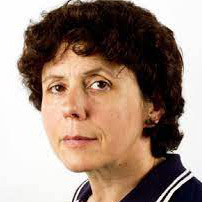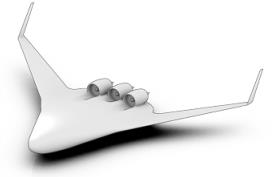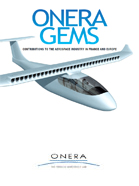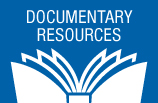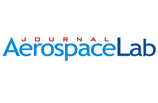The TIS scientific domain

Philippe Bidaud
Scientific Director
of the Information Processing and Systems scientific domain
Highlights
 Creation of the AI4AE virtual research center with DLR (2019) The two French and German research centers have initiated cooperation in "AI and applications in aerospace engineering", by creating a virtual research center that will be dedicated to contributing to the digital transformation of the aerospace industry. See www.onera.fr/fr/ai4ae
Creation of the AI4AE virtual research center with DLR (2019) The two French and German research centers have initiated cooperation in "AI and applications in aerospace engineering", by creating a virtual research center that will be dedicated to contributing to the digital transformation of the aerospace industry. See www.onera.fr/fr/ai4ae

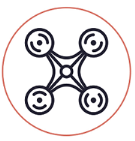

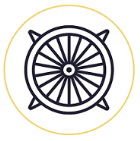
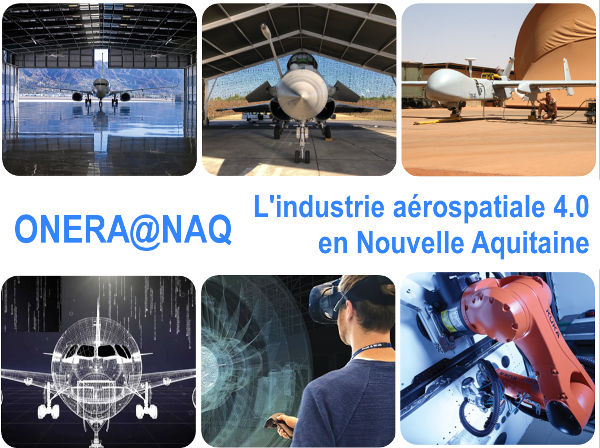 ONERA gets closer to the Nouvelle Aquitaine region (2019) Signing of a partnership agreement, aimed at fostering and intensifying collaborations in digital transformation for the region's aeronautics, space and defense industry. ONERA commits its research potential to topics such as digital twins, maintenance, agile production...
ONERA gets closer to the Nouvelle Aquitaine region (2019) Signing of a partnership agreement, aimed at fostering and intensifying collaborations in digital transformation for the region's aeronautics, space and defense industry. ONERA commits its research potential to topics such as digital twins, maintenance, agile production...
TIS in brief
This field covers what is usually referred to as sciences and technologies of information and communication, the main components of which are automatic control, signal and image processing, robotics, digital simulation, system and process design and optimization, computer systems engineering, knowledge engineering and cognitive processes.
Much of the research is aimed at the design of aeronautical and aerospace systems, defense and surveillance systems and security systems, as well as the deployment of these systems in complex missions, the processing of massive data from on-board sensors and the development of knowledge about large-scale phenomena. The generic nature of this work means that it has considerable diversification potential, particularly in transport and production systems.
Through innovative digital methods and techniques, and the convergence of modeling, simulation and data, this work aims to make advances that will enable new intrinsic performances to be achieved for the systems in question. It also addresses issues relating to their integration into information and communication systems, and to the need for interactivity with users, as well as safety, security, autonomy and system coordination.
Many of these projects give rise to experimental developments (mini-UAVs and UAVs, land and submarine robots, piloting aid interfaces, intelligent sensor networks, etc.). Others involve the development of software platforms (air traffic, battle lab, MDO design, etc.) to create digital models and evaluate operational performance through physical simulation.
Scientific Officers
TIS Themes
The TIS domain comprises 8 scientific themes, mainly spread across the DTIS Information Processing and Systems department (and, for one theme, the DAAA Aerodynamics, Aeroelasticity, Acoustics department).
- System identification and control DTIS
- Perception and information processing DTIS
- Robotics and autonomy DTIS
- Safety and security of cyber-physical systems DTIS
- Systems and software engineering DTIS
- Artificial intelligence and decision-making DTIS
- System design and optimization DTIS DAAA
- Cognitive engineering and human-system interaction DTIS
System identification and control
DTIS Sylvain Bertrand, Clément Roos (@ onera.fr).
- Optimal control
- Robust adaptive control
- Predictive control
- Distributed control
- Hybrid system analysis
- Multicriteria hybridization identification
- State estimation and trajectory reconstruction
- Fault detection and reconfiguration
- LFT modeling for robustness analysis
- Robust and self-sequencing structured Hinf control
- Approximation of high-dimensional systems
- Sensor-referenced control
- Fault-tolerant control
- Distributed control and estimation for multi-agent systems
Examples
 Toolboxes SMAC, MORE and GENETIC SMAC - Robust synthesis and robustness analysis; MORE - Reduction and approximation of dynamic models; GENETIC - Optimization for identification
Toolboxes SMAC, MORE and GENETIC SMAC - Robust synthesis and robustness analysis; MORE - Reduction and approximation of dynamic models; GENETIC - Optimization for identification
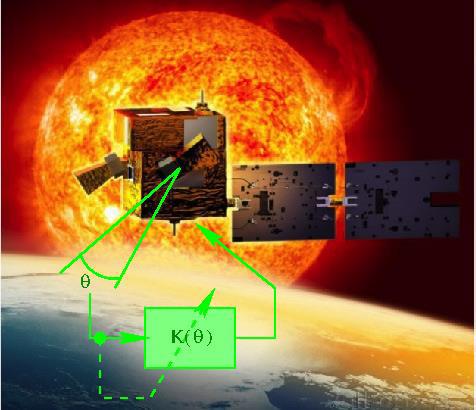 Mission PICARD Attitude control device Control rules are adapted as a function of deviation from pointing position
Mission PICARD Attitude control device Control rules are adapted as a function of deviation from pointing position
 ATTOL Project Autonomous "cab" navigation and landing
ATTOL Project Autonomous "cab" navigation and landing
Perception and information processing
DTIS Luc Meyer, Olivier Herscovici (@ onera.fr)
- Massive heterogeneous data processing
- Data fusion using Bayesian networks
- Learning for image analysis and image-based measurement
- Tools for certified hybrid navigation
- Near-sensor processing and sensor-processing co-design
- Imaging measurement for experimental physics (PIV-BOS)
- Tracking, data fusion, sensor networks and situation awareness
- Non-linear filtering and data fusion for navigation
- Exploitation of airborne or satellite remote sensing images for environmental observation
- On-board vision for vehicle autonomy
Examples
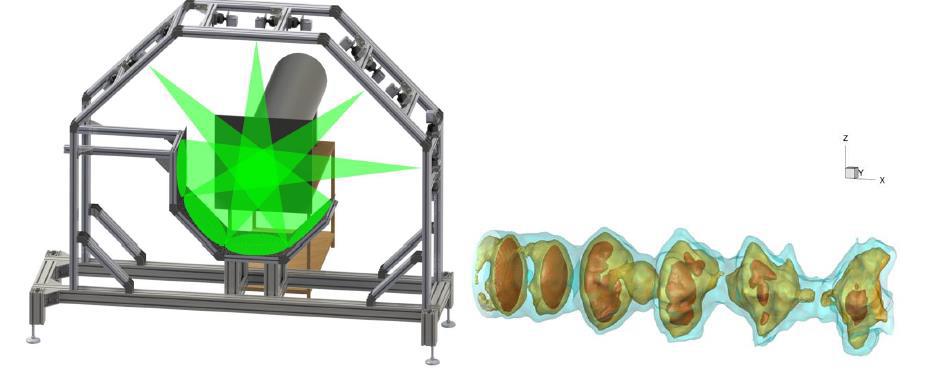
BOS3D wind tunnel measurement 6 to 12 synchronized cameras in front of textured backgrounds. Tomographic system for instant quantitative 3D density measurement.

Interpretation of multi-source images and data fusion Comparison of different learning-based automatic classification methods based on multi-source optical data in urban areas.
Robotics and autonomy
DTIS Christophe Grand, Julien Marzat (@ onera.fr).
- Multi-robot decision architectures
- Resilience and robustness of robotic systems
- Cooperative robot fleets
- Reinforcement learning
- Processing Programming and simulation architecture
- Autonomous navigation
- Sensor(s)-referenced control
- Coordination of multi-robot systems
- Autonomy and decision-making
Examples
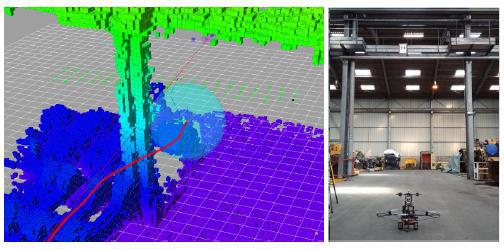
PRI DROSOFILES Embedded geometric vision and state estimation for 3D modeling of the observed environment. Guidance-steering, stabilization and avoidance of unknown or dynamic obstacles.
*PRI: Research-industry partnership
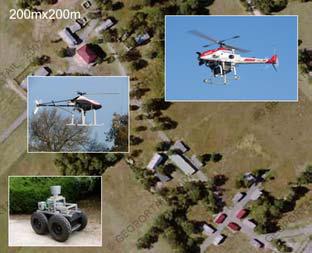
ACTION/MUST A decision-making architecture to achieve a high level of resilience in the deployment of autonomous multi-robot systems, based on the HiPOP (Hierarchical Partial Order Planning) hybrid planner, which organizes actions in a hierarchical form of execution and repair of action plans.
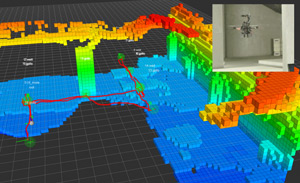
COPERNIC Lab - Control and perception for autonomous navigation and inter-vehicles cooperation (web site)
Safety and security of cyber-physical systems
DTIS Christel Seguin, Loïc Brevault (@ onera.fr)
- Formal modeling and evaluation of system dependability
- Probabilistic estimation of risks and system reliability
- Fault tolerance mechanisms, health prognosis and fault diagnosis
- Dependability argumentation and certification
Examples
DGAC PHYDIAS agreement on drone safety analysis methods https://w3.onera.fr/PHYDIAS/
DROSERA tools for analyzing drone fallout zones after accidents
Analysis of air traffic data and collision risks
Health prognosis for launchers
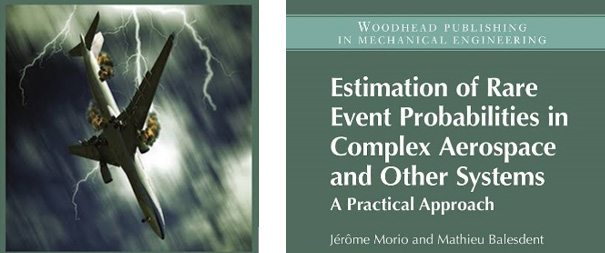 Book: Estimation of Rare Event Probabilities in Complex Aerospace and Other Systems : A practical Approach. Jérôme Morio, Mathieu Balesdent
Book: Estimation of Rare Event Probabilities in Complex Aerospace and Other Systems : A practical Approach. Jérôme Morio, Mathieu Balesdent
 Ouvrage Model-Based Safety and Assessment - Conference proceedings, Editors: Christel Seguin, Marc Zeller, Tatiana Prosvirnova
Ouvrage Model-Based Safety and Assessment - Conference proceedings, Editors: Christel Seguin, Marc Zeller, Tatiana Prosvirnova
Systems and software engineering
DTIS Frédéric Boniol, Romain Kervarc (@ onera.fr) .
- Formal methods for verification/certification of artificial intelligence
- Artificial intelligence to accelerate formal methods
- Verification of VHDL codes
- Engineering large computational codes
- Embedded wireless networks
- Methods and languages for systems and software development
- Formal languages for requirements modeling and specification
- Control system modeling
- Embedded verification & certification
- Real-time systems analysis
- Avionics network analysis
- Many-core architectures
- Simulation architectures
Examples
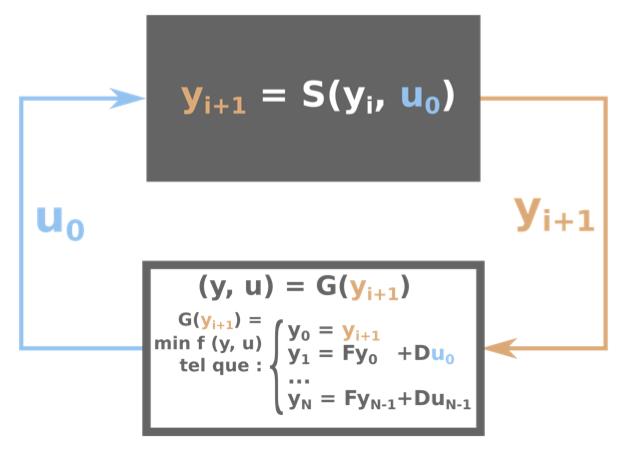 Controller verification Development of a high-level formal imperative language (pseudo-code), called PySil, for MPC controllers, using the interior-point algorithm.
Controller verification Development of a high-level formal imperative language (pseudo-code), called PySil, for MPC controllers, using the interior-point algorithm.
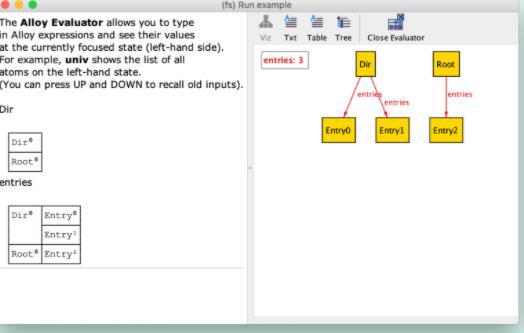 Electrum language A language for specification in bounded relational logic (a first-order logic with relational terms and whose interpretation domains are bounded by the user) for automated verification of properties and code behavior by translation into a satisfiability problem for propositional logic.
Electrum language A language for specification in bounded relational logic (a first-order logic with relational terms and whose interpretation domains are bounded by the user) for automated verification of properties and code behavior by translation into a satisfiability problem for propositional logic.
Artificial intelligence and decision-making
DTIS Stéphane Herbin, Gauthier Picard (@ onera.fr) .
- Trusted AI for robustness and certification
- AI, physical models and knowledge
- Interactive learning
- Dynamic planning
- Knowledge representation for reasoning and decision-making
- Planning under uncertainty (applications to space, ATM, industry)
- Distributed decision making
- Machine learning on heterogeneous data
Examples
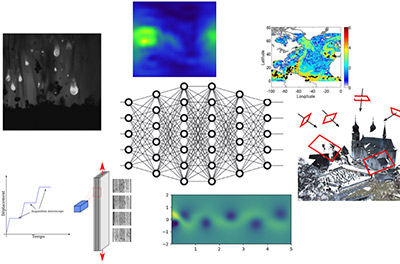 DELTA A software environment designed to facilitate the use of deep learning (CNN, RNN, GAN) in ONERA's business activities. DELTA has been used for point cloud semantization, weather prediction (lightning risk and electronic content of the ionosphere), propellant combustion studies, crack counting in composite materials, and fluid mechanics. DELTA is mainly based on Pytorch (although a Caffe version still exists), and relies on an ONERA cluster of new-generation Nvidia GPUs.
DELTA A software environment designed to facilitate the use of deep learning (CNN, RNN, GAN) in ONERA's business activities. DELTA has been used for point cloud semantization, weather prediction (lightning risk and electronic content of the ionosphere), propellant combustion studies, crack counting in composite materials, and fluid mechanics. DELTA is mainly based on Pytorch (although a Caffe version still exists), and relies on an ONERA cluster of new-generation Nvidia GPUs.
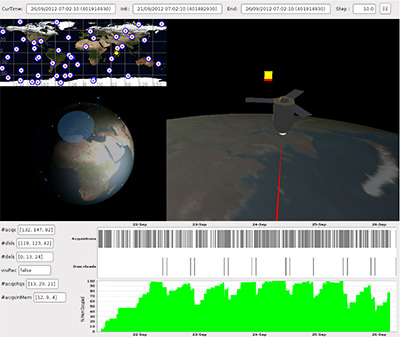
InCell is a Constraint Programming tool for managing several types of renewable resources. It considers disjunctive resources, cumulative resources and resources with an appropriation period. Conflicts over resource use are resolved by prioritizing activities for scheduling. In addition, the tool includes an invariant for constraint-based differentiable local search, which transforms a priority order into a complete schedule and incrementally manages this schedule in the event of a change in the order. On this basis, several neighborhoods and search strategies can be used, and new best upper bounds have been obtained for several scheduling benchmarks. The spatial domain is a key application of InCELL.
Five-day simulation of InCELL's scheduling of ground data acquisition and transfer for an Earth observation mission.
System design and optimization
DTIS DAAA Mathieu Balesdent, Pierre-Marie Basset (@ onera.fr) .
- Uncertainty propagation and multi-fidelity management
- Hybrid models and data assimilation
- Model reduction
- Co-design (aircraft-operations)- Modeling and multidisciplinary optimization techniques for aerospace systems
- Methods and tools for system design and performance analysis
- Exploration of new aerospace concepts and performance evaluation
Examples
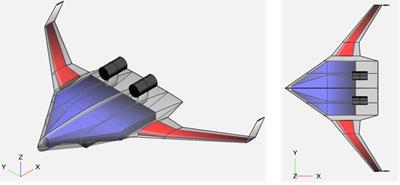
 Eole An airborne launch system for small low-Earth orbit satellites. This launcher uses hybrid propulsion, a high-performance composite structure and avionics with autonomous flight functions.
Eole An airborne launch system for small low-Earth orbit satellites. This launcher uses hybrid propulsion, a high-performance composite structure and avionics with autonomous flight functions.
Cognitive engineering and human-system interaction
DTIS Bruno Berberian, Thomas Rakotomamonjy (@ onera.fr) .
- Control through the haptic sense
- Analysis of operator performance when supervising highly automated agents
- Determinants of performance in emergency situations
- Determining the neural correlates of conscious perception mechanisms
- Multimodal integration involved in the perception and control of self-motion- Analysis of acceptability, readability and, by extension, usability of automated system
Exemples
![]() Spatial disorientation in aeronautics Studies of compensation mechanisms for disorientation phenomena using visual (synthetic) and haptic aids. Visual and physical stimulation - Analysis of pilot reactions through posture capture, head orientation, oculomotor activity, etc.
Spatial disorientation in aeronautics Studies of compensation mechanisms for disorientation phenomena using visual (synthetic) and haptic aids. Visual and physical stimulation - Analysis of pilot reactions through posture capture, head orientation, oculomotor activity, etc.
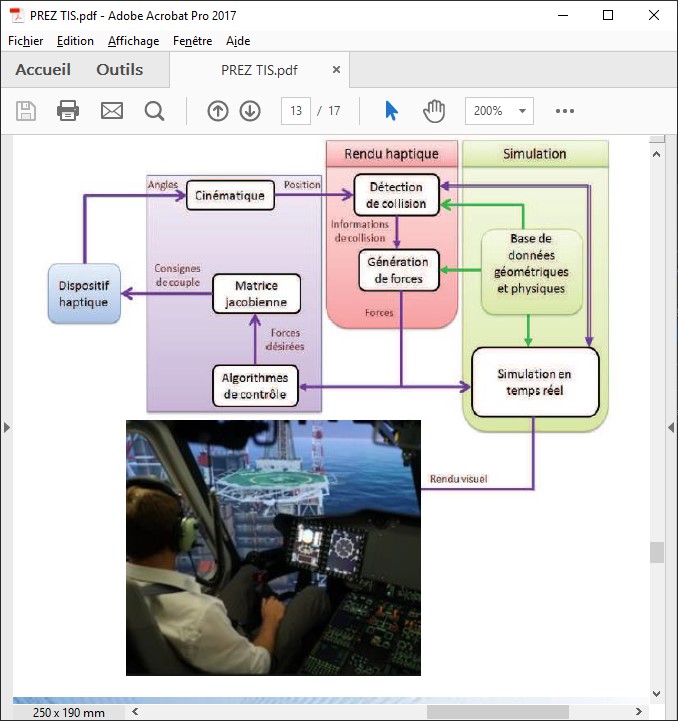 Pilot assistance Force feedback on haptic interface (coupling stability - effect of delays) - Virtual guides through real-time simulation of aircraft-environment behavior
Pilot assistance Force feedback on haptic interface (coupling stability - effect of delays) - Virtual guides through real-time simulation of aircraft-environment behavior



